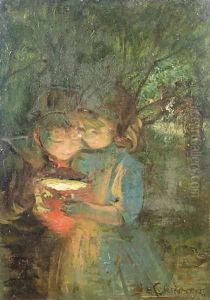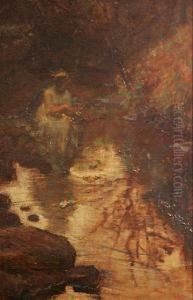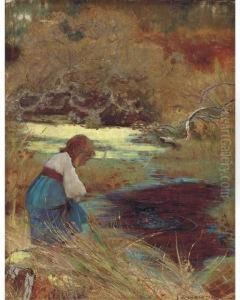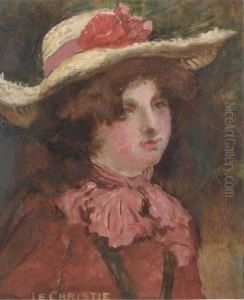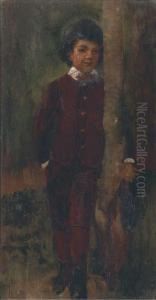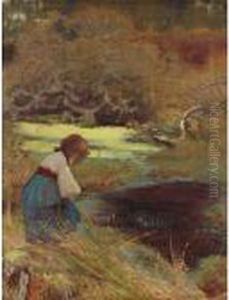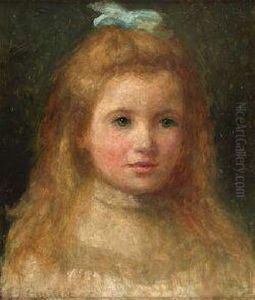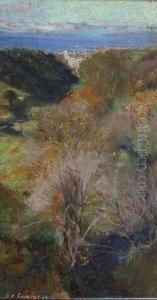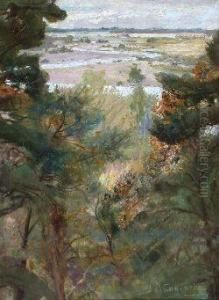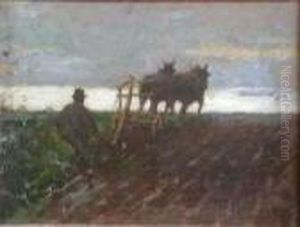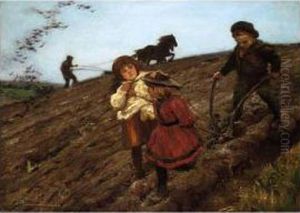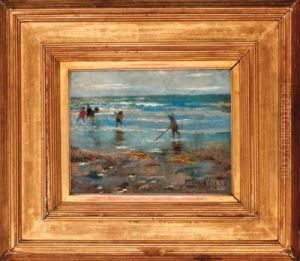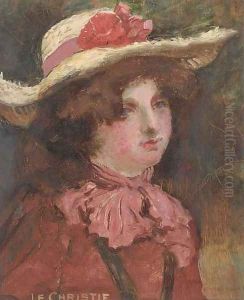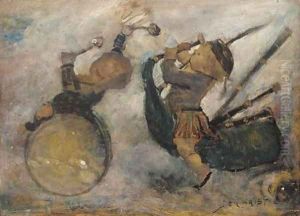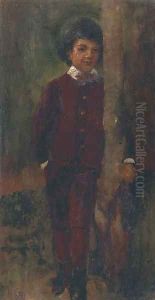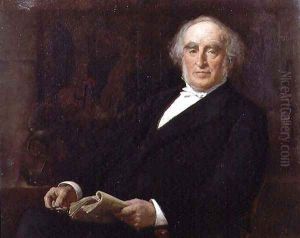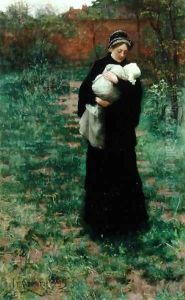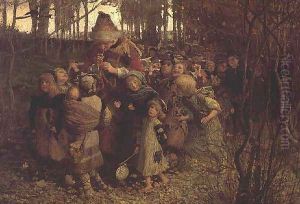James Elder Christie Paintings
James Elder Christie was a Scottish painter known for his genre scenes, portraits, and landscapes. Born in 1847 in Hawkhill, Dundee, Scotland, Christie developed an interest in art at a young age. He began his formal art education at The Glasgow School of Art, where he was influenced by the Glasgow Boys, a group of artists who aimed to bring a more realistic depiction of Scottish life into their paintings.
Christie's early work reflected the social realities of his time, often portraying the lives of the working class with empathy and detail. He was particularly skilled in capturing the subtleties of human expression and the nuances of everyday life. His genre scenes are notable for their narrative quality and their ability to convey a sense of story and character.
Throughout his career, Christie exhibited his work at various prestigious venues, including the Royal Scottish Academy and the Royal Glasgow Institute of the Fine Arts. He was well-regarded by his contemporaries, and his paintings were collected by art enthusiasts in Scotland and beyond.
In addition to his genre scenes, Christie also painted a number of landscapes and portraits. His landscapes often depicted the Scottish countryside and are characterized by their atmospheric quality and attention to the effects of light. His portraits, on the other hand, reveal his keen observation of human nature and his ability to capture the personality of his subjects.
Later in his career, Christie's style evolved, showing an interest in tonalism and the exploration of mood through color and light. This period of his work is marked by a softer palette and a more impressionistic approach to painting.
James Elder Christie passed away in 1914, leaving behind a body of work that continues to be appreciated for its contribution to Scottish art. His paintings are held in several public collections, including the Glasgow Museums and the Dundee Art Galleries and Museum, ensuring that his legacy as a significant Scottish artist endures.
